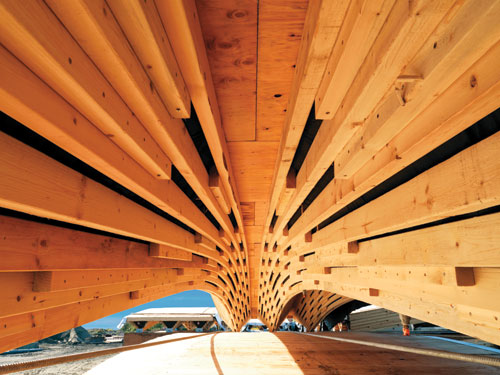A Natural Choice
Learning Objectives:
- Describe accepted definitions of sustainability.
- Discuss ways in which wood contributes to sustainable design.
- Explain the trends behind the increased use of wood as an environmentally sound building material.
- Evaluate the impact of building rating systems and codes on environmentally sound design.
Credits:
Sustainable building is increasing, and will constitute a growing sector in the construction industry in years to come. According to a McGraw Hill Construction report entitled 2013 Dodge Construction Green Outlook, the total market for green building, including residential and non-residential, will be worth $85 billion—up from $78 billion in 2010 and $10 billion in 2005. According to the report, green building was expected to comprise 44 percent of all non-residential construction starts by value by the end of 2012, and 20 percent of the residential market.
But what actually constitutes a sustainable project? While sustainable practices and technologies are constantly evolving and may differ from region to region, certain areas of focus are widely accepted as being fundamental to sustainable building: siting and structural design; energy efficiency; materials efficiency; indoor environmental quality; operations and maintenance; and waste reduction. After considering various definitions of sustainability, this article will focus on materials efficiency and examine the relevance of wood to sustainable design in the context of environmental, social and economic factors. As the most forward-looking building philosophies allow a range of options, the article will also discuss how innovative designers are finding creative solutions for improved environmental performance.
True Sustainability
The dictionary provides half a dozen meanings for the word "sustainable." Yet since the 1980s, the term has come to refer to human sustainability on earth, with the most widely quoted definition being that of the United Nations, which was set out in a report of the Brundtland Commission of 1987. It stated, "Sustainable development is development that meets the needs of the present without compromising the ability of future generations to meet their own needs." Over the years, this definition has evolved, with many groups adding their own perspective about what sustainability is, what its goals are and how they should be achieved.
 |
Wood wave panels were designed to create a one-of-a-kind roof from pine beetle wood at Richmond Olympic Oval, Vancouver, British Columbia, Canada. Architect: Cannon Design Photo courtesy of www.naturallywood.com |










